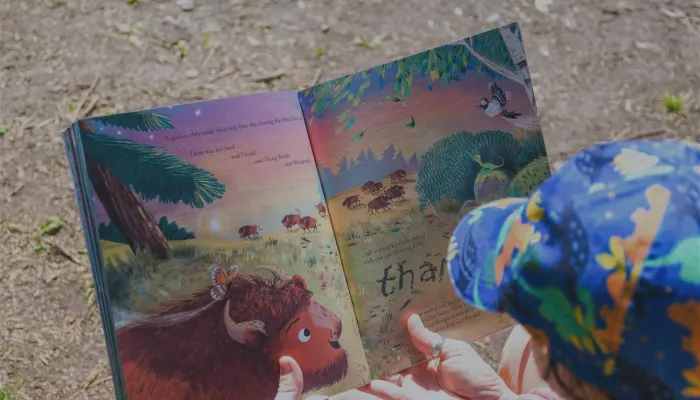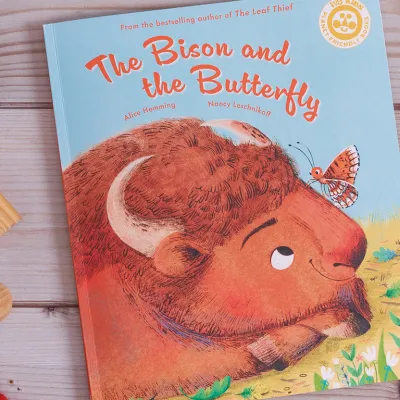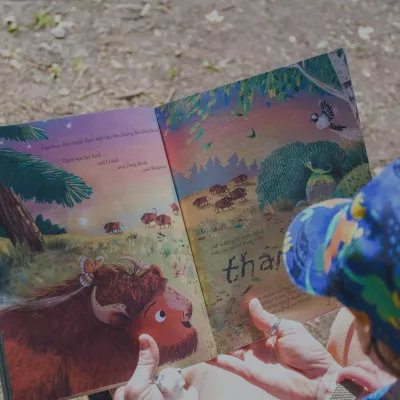Discover habitats through our enchanting children's book written by New York Times bestselling author Alice Hemming.
In this workshop, pupils will learn all about habitats and our ground-breaking Blean bison project through our children's book - The Bison and the Butterfly.
This enchanting ecosystem story tells the story of how bison, and her natural behaviours, shape her habitat and support a range of other animals in the forest. It is a story of conservation and of friendship. Children will read the book together, learning about habitats and ecosystems, before taking part in games and activities linked to habitat change and habitat loss.
- Venue: available at Tyland Barn Nature Park and Sevenoaks Wildlife Reserve
- Setting: Indoors, outdoors and covered teaching shelter
- Time: 50 minutes – 90 minutes (depending on number of groups per visit)
Want to make more of the Bison and Butterfly in your classroom?
To help your class get the most out of their The Bison and the Butterfly experience once back in the classroom, we have created a teacher's guide to accompany the book. You can buy your copy of the book and download your free teacher's guide and activity pack by following the links below:
- identify and name a variety of common animals including fish, amphibians, reptiles, birds and mammals
- identify and name a variety of common animals that are carnivores, herbivores and omnivores
- describe and compare the structure of a variety of common animals (fish, amphibians, reptiles, birds and mammals, including pets)
- identify that most living things live in habitats to which they are suited and describe how different habitats provide for the basic needs of different kinds of animals and plants, and how they depend on each other
- identify and name a variety of plants and animals in their habitats, including microhabitats
- describe how animals obtain their food from plants and other animals, using the idea of a simple food chain, and identify and name different sources of food.
- identify that animals, including humans, need the right types and amount of nutrition, and that they cannot make their own food; they get nutrition from what they eat
- recognise that living things can be grouped in a variety of ways
- explore and use classification keys to help group, identify and name a variety of living things in their local and wider environment
- recognise that environments can change and that this can sometimes pose dangers to living things.
- describe how living things are classified into broad groups according to common observable characteristics and based on similarities and differences, including microorganisms, plants and animals
- give reasons for classifying plants and animals based on specific characteristics.
- identify how animals and plants are adapted to suit their environment in different ways and that adaptation may lead to evolution.




